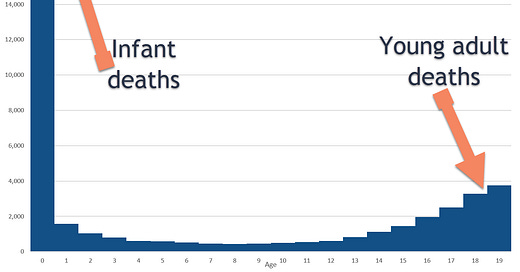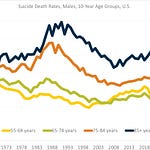In this episode, I respond to a JAMA Open Network article on COVID being the 8th top cause of death for children and “young people” from yesterday (yes, I did a post on it already) to explain more what annoyed me so much.
The moral: when you do mortality analyses, you need to separate your babies from the kids, and the young adults from the kids as well. Also, picking the worst mortality period from the past isn’t necessarily going to influence action in the future.
Oh, and pools are dangerous to little kids. (But they’re also fun.)
Episode links/notes
JAMA article:
30 Jan 2023: Assessment of COVID-19 as the Underlying Cause of Death Among Children and Young People Aged 0 to 19 Years in the US
doi:10.1001/jamanetworkopen.2022.53590
Key Points
Question Where does COVID-19 rank as an underlying cause of death for children and young people aged 0 to 19 years in the US?
Findings Among children and young people aged 0 to 19 years in the US, COVID-19 ranked eighth among all causes of deaths, fifth in disease-related causes of deaths (excluding unintentional injuries, assault, and suicide), and first in deaths caused by infectious or respiratory diseases. COVID-19 deaths constituted 2% of all causes of death in this age group.
Meaning In this study, COVID-19 posed a significant disease burden for children and young people, so pharmaceutical and nonpharmaceutical interventions continue to be important to limit transmission of the virus and to mitigate severe disease.
My post in response:
Key graph from that post: (with some new annotations)
Related STUMP posts:
January 2023: Most recent ranking of causes of death by age group (updated for 2021)
September 2020: Mortality with Meep: Retrospective on Mortality Trends (and a wee bit about COVID)
The 19th century was a rough time to live (or, in this case, not live). While there was some mortality improvement for children up til the Civil War, that diphtheria outbreak [late 1800s] caused disimprovement.
But check out 1930. From 1920 to 1930, there was an almost 50% improvement of mortality. Not a 25 year period, but a 10 year period. Child mortality dropped from about 17% to 9% over that period.
I didn’t point it out in [the older] post, but look at the 2010 data point — even with child mortality as low as it currently is, with most kids dying from accidental causes, homicide (sorry, y’all), or cancer… there still was an over 10% improvement in [child] mortality from 2000 to 2010. It still flabbergasts me. It’s not just breakthroughs with childhood cancer (which is rare, but because kids die so infrequently of any cause, it’s a top cause of child deaths), but a reduction in accidental deaths. YAY SAFETY!
April 2022: Pools are more dangerous than Covid to small children
Here are the numbers for kids aged 1-4, death by drowning while in pools (ICD-10 code W67), U.S.:
2018: 237
2019: 200
2020: 239
2021 (provisional): 229The 2021 swimming pool deaths are 4 times that of the Covid deaths for this age group. Let’s ban swimming pools! How dare people!
I did not include the ones where the kids drowned in pools from accidentally falling in the pools (ICD-10 code W68). They were already in the pools, presumably having a good time. So I low-balled the risk of swimming pools.
Look, I do not want to ban swimming pools, even if little kids are around:
When my kids were little, I did worry about my neighbors putting in a swimming pool. I was aware of the dangers … but I also knew the orders of magnitude. I knew about needing to put in particular safeguards for our autistic son, but I didn’t go to my town council to have pools made illegal.
Because swimming in pools is fun. And people (and children especially) should enjoy life. Life is for living.
Enjoy life!
(memento mori)
















Share this post